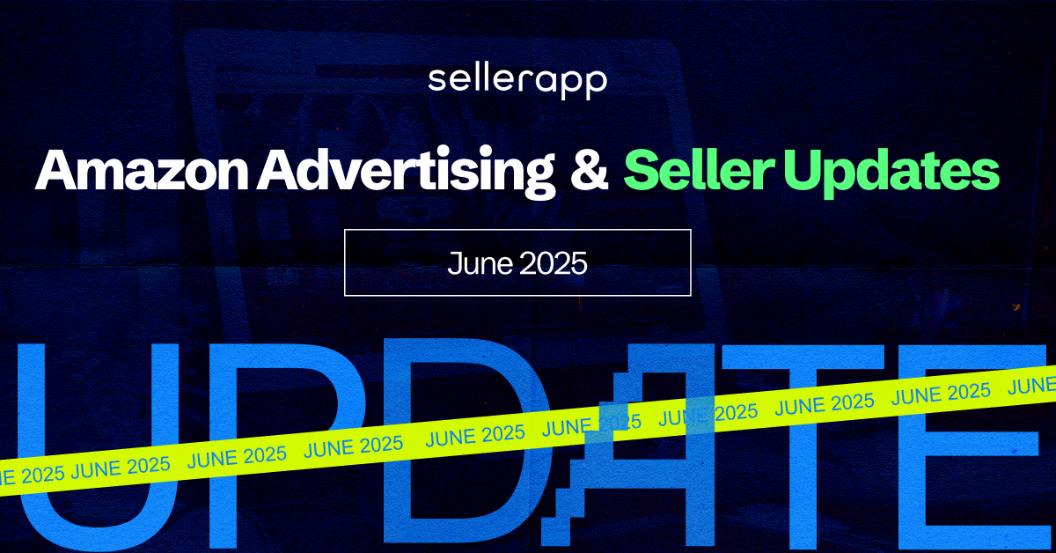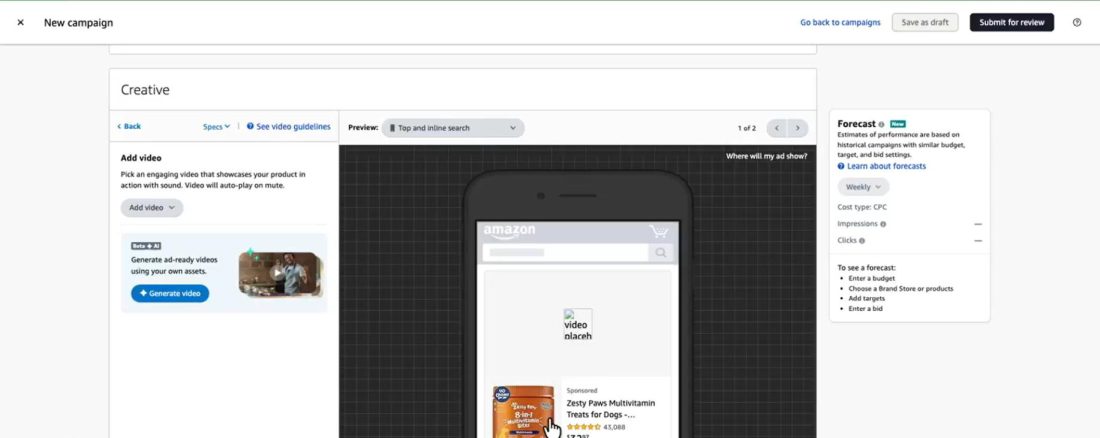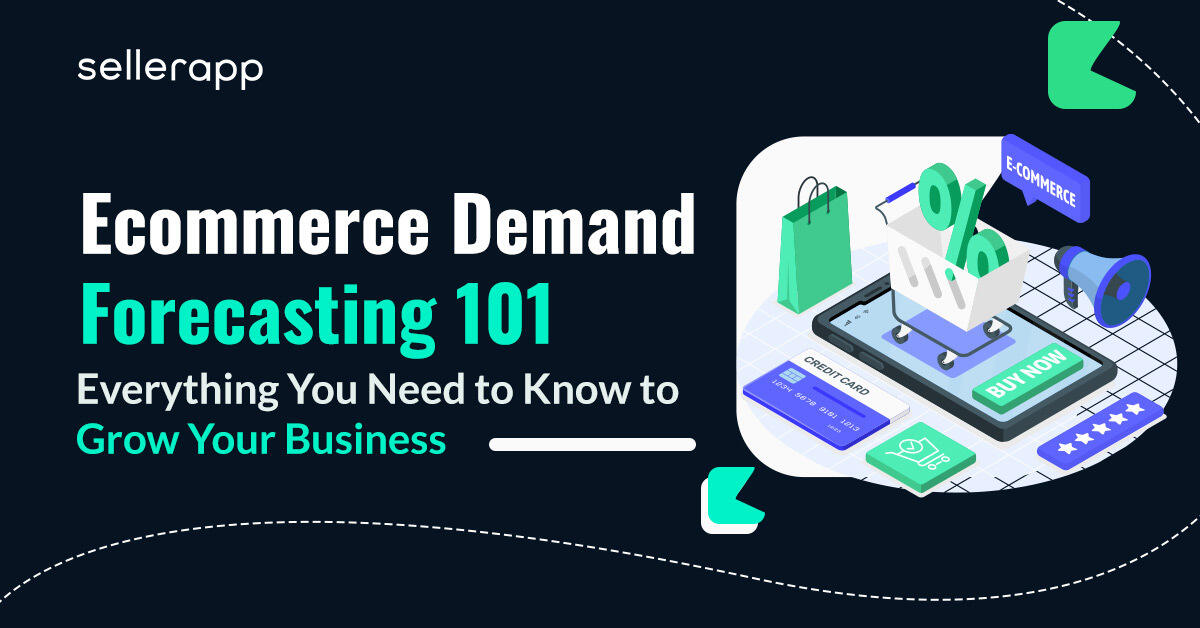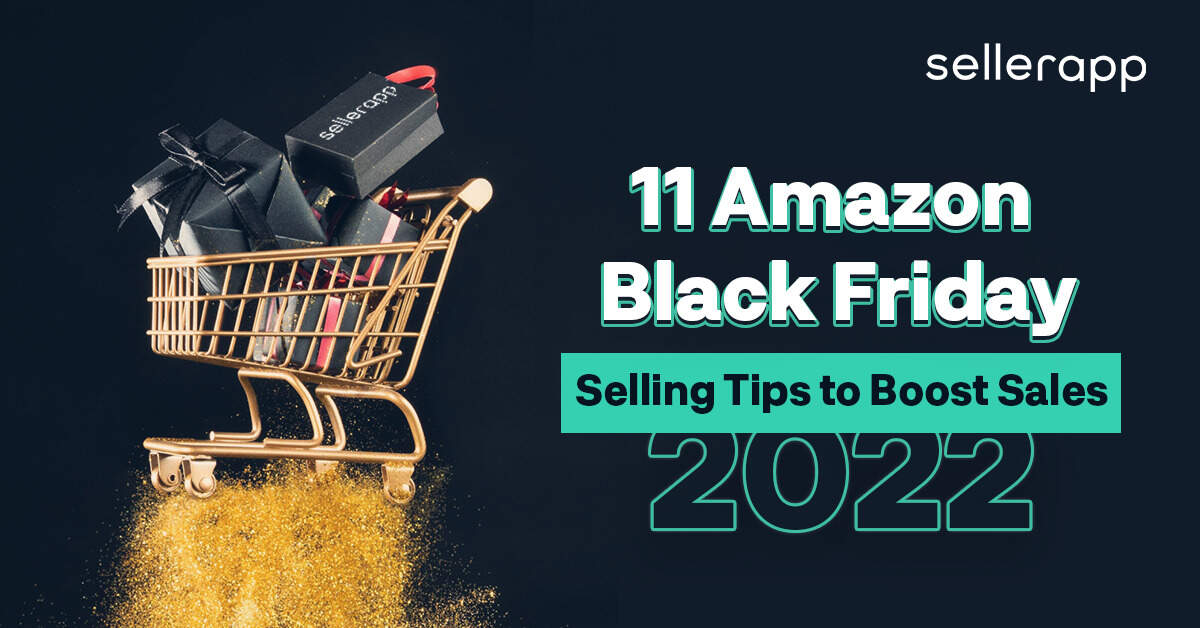Amazon Advertising & Seller Updates: What’s Changing in June 2025?

June 2025 was a strong month for Amazon Advertising and Seller Central updates. However, beyond the usual feature tweaks, this month’s changes offer real, practical advantages.
Especially for campaign managers and operators handling multiple brands, clients, or product lines.
With deeper access to purchase behavior through AMC, better DSP visibility, improved acquisition tools in Sponsored Brands, and more flexibility in targeting business customers through Sponsored Products, Amazon has made it easier to optimize campaigns across the funnel.
On the seller side, Amazon introduced changes that support better inventory planning, listing quality, operational compliance, and review generation. All of these new updates can directly impact ad performance and conversion.
Whether you’re preparing for Prime Day or fine-tuning Q3 strategy, these updates can help remove bottlenecks and give you more levers to work with. Which we at SellerApp absolutely appreciate.
Here’s a full breakdown of what changed and how to use it to your advantage:
Amazon Advertising June 2025 Updates
June brought a series of updates from Amazon Advertising that are genuinely useful for campaign managers. These are not just technical changes.
They offer new ways to improve how you plan, segment, and scale your ad strategy with less guesswork and more control.
Here’s a quick summary of what launched and how each update can help you work smarter:
Amazon Advertising Update 1: Prime Day 2025 Will Run for a Whopping Four Days!

Amazon has confirmed Prime Day 2025 will run from July 8 to 11. That gives brands four full days to drive sales, but the opportunity isn’t spread equally across the event. Campaigns that succeed won’t treat each day the same.
Shoppers begin browsing and adding to cart days before the event officially starts.
From July 5 to 7, you should already be increasing budgets on ASINs with scheduled deals while keeping spend efficient on others. Day one typically delivers the highest ROAS, so your top performers and hero products should lead with maximum visibility and budget. Performance can start to taper on day two.
You’ll need to monitor spend and pivot in real time to capture demand without overspending. The final two days are more fluid. Some shoppers return for second chances, while others drop off. Use your mid-event data to decide whether to sustain visibility or scale down gradually.
After Prime Day ends, the window isn’t closed. High-traffic periods generate plenty of warm audiences. Invest in retargeting, especially for consumables or frequently reordered products. You’ve earned the visibility. Now make it work longer.
Amazon Advertising Update 2: Audience Targeting Begins to Surface in Deal Creation
Amazon is starting to integrate audience filters into the deal creation flow. Right now, it’s a simple toggle. But it points to a larger shift in how sellers will target promotional visibility in the future.
If expanded, this could introduce segmentation options that mirror Amazon Marketing Cloud, including filters for new-to-brand buyers, repeat customers, or cart abandoners. While it’s still in early stages, the direction is clear. Amazon is preparing to offer sellers more control over who sees their deals.
Even with limited targeting, this feature creates immediate value for high-intent events like Prime Day.
If you can restrict visibility to Prime members who are more likely to convert, you reduce inefficient impressions and protect margin.
Start thinking about how deal segmentation fits into your broader media mix. As more controls roll out, your deal strategy will no longer be one-size-fits-all.
Amazon Advertising Update 3: AI-Powered Video Builder Rolls Out Inside the Console

Amazon has launched a new AI-driven video creation tool within the Sponsored Brands creative suite. It uses your product images and preset templates to automatically generate short videos. The current version is fairly basic. Customization is limited and transitions are simple. But this is a clear move toward scalable creative generation inside the Ads console.
As the tool evolves, we expect to see more options for scene control, text overlays, and possibly dynamic product highlights. In its current form, it’s a useful way to get video ads live quickly. Especially for sellers who don’t have in-house production resources.
Campaign managers should view this as a testing ground. Run head-to-head comparisons between AI-generated videos and your current static creatives. Track click-through rate, scroll engagement, and downstream impact. If video consistently outperforms, you’ll know where to scale.
Amazon Seller Updates: June 2025 Roundup for Better Ops and Compliance
Amazon continues to release updates that directly impact how sellers manage product visibility, fulfillment, compliance, and operations.
Here’s what’s new and how to make the most of it:
Amazon Seller Update 1: Plan Ahead for Potential Port Delays on the West Coast
Amazon has flagged recurring congestion at major West Coast ports, especially the Port of Los Angeles. When volumes peak, shipments can face delays getting into the Fulfillment Network.
To avoid disruption, it’s a good idea to diversify your inbound strategy. Amazon recommends sending stock earlier than usual during peak periods, holding safety stock in the US using Amazon Warehousing and Distribution, and exploring alternative ports like Oakland, Seattle-Tacoma, New York-New Jersey, or Savannah. You can also consider sending inventory to non-West Coast fulfillment centers or using air freight for time-sensitive SKUs.
These steps can help you stay in stock and avoid performance dips during high-volume seasons.
Amazon Seller Update 2: FBA Box Length Limit Increased to 36 Inches Starting June 20
Beginning June 20, 2025, Amazon will allow longer boxes for FBA shipments in the US. The maximum allowed length is increasing from 25 inches to 36 inches. The new standard box limits will be 36 inches in length, 25 inches in width, 25 inches in height, and 50 pounds in weight.
This makes it easier to align your packaging with standard industry sizes or handle longer products without needing special prep or oversized classification. If you’ve already shipped boxes that meet the new specs, Amazon will process them as standard-size shipments with no defects or added fees.
Amazon Seller Update 3: Battery Safety Questions Now Required for Merchant-Fulfilled Listings
If you sell battery-powered products through Fulfilled by Merchant, take note of a new compliance requirement coming into effect on July 28, 2025. You’ll now need to answer a short set of battery safety questions when creating or editing listings.
The listing flow will ask if batteries are required, whether they’re included, and what the battery cell composition is. If the battery type isn’t listed, you can enter it manually.
Getting this wrong may lead to listing deactivation, so make sure your teams have access to the correct packaging or manufacturer information when uploading listings. This is part of Amazon’s ongoing push to improve safety and transparency.
Amazon Seller Update 4: New Bulk Template to Manage Price Discounts Across SKUs
If you’ve been manually updating price discounts, this will save you a lot of time. Amazon has released a bulk template that lets you add or update discounts and quantity limits for up to 500 SKUs at once.
It works for new discounts and also for updating existing ones, especially if there are errors flagged in your current setup. You can export your discounted SKUs, edit them in the template, and re-upload changes. This should be especially useful during peak sales or seasonal campaigns.
The template is available through the Price Discounts dashboard.
Amazon Seller Update 5: Product Test Results Will Only Be Accepted from Compliant Labs Starting July 13
To tighten up product safety standards, Amazon will only accept test reports from labs that meet its compliance requirements starting July 13, 2025.
If your documentation comes from a lab on Amazon’s unapproved list, it will be rejected. Before requesting new test reports, it’s worth checking the latest list of suspended validation labs. This will help you avoid wasted time, delays in listing approval, or issues during product compliance reviews.
You can find approved labs through the Service Provider Network.
Amazon Seller Update 6: AI-Based Fix Recommendations Now Available in Voice of the Customer Dashboard
The Voice of the Customer dashboard now includes a Fix Recommendations tool that helps you improve product listings based on real customer feedback. The system uses AI to surface edits that can reduce returns and improve satisfaction.
It suggests listing-level changes with an explanation of how they’re likely to impact metrics like return rate. This can be useful for teams trying to troubleshoot underperforming ASINs without manually reading through hundreds of reviews.
You can try the tool now by visiting your Voice of the Customer dashboard.
Amazon Seller Update 7: Resellers Can Now Use Amazon Vine to Generate Reviews
As of early June 2025, Amazon Vine is now open to resellers in nine countries including the United States, Canada, the United Kingdom, Germany, France, Spain, Italy, Japan, and Australia.
If you are a reseller authorized by a brand enrolled in Amazon Brand Registry, you can now enroll ASINs in Vine and start building early-stage reviews. This is particularly helpful for newer listings or cold start products that often struggle with visibility and buyer trust.
Campaign managers can use this update to accelerate conversion for newer products by getting them into the Vine pipeline before major events like Prime Day or Q4. Enroll products directly from the Advertising tab in Seller Central.
Amazon Seller Update 8: Amazon Introduces Dedicated Stolen Goods Policy Starting June 30
Amazon will begin enforcing a standalone stolen goods policy starting June 30, 2025. This move is in response to regulatory requirements but reflects policies that were already in place.
The key takeaway here is that nothing about your operational responsibilities changes. However, enforcement may become more visible and specific now that there is a dedicated policy in place. Make sure your sourcing documentation is in order and that you are working only with verified suppliers.
The penalties for violations remain severe, including potential removal of listings, loss of selling privileges, and inventory disposal at your expense. Use this as a reminder to double-check your chain of custody, especially if you work through distributors or liquidators.
Amazon Seller Update 9: Seller Central Mobile App Adds Stay Informed Tab
Amazon has added a Stay Informed tab to the mobile Seller Central app as of June 2025. This feature consolidates the latest announcements and updates that typically appear on Seller News.
For sellers managing day-to-day operations on the go, especially during seasonal peaks, this provides a quicker way to stay current without needing to log in from a desktop. If you have remote teams or manage multiple accounts, this small update could improve communication and internal alignment.
Amazon Seller Update 10: 5 Percent Surcharge Waived for Walmart Fulfillment via MCF
Sellers using Amazon’s Multi-Channel Fulfillment to deliver Walmart Marketplace orders can now avoid the 5 percent surcharge that typically applies when blocking Amazon Logistics.
This fee waiver is available through January 14, 2026, and is especially useful for maintaining fast fulfillment while respecting Walmart’s policy against using Amazon-branded delivery.
If you’re running cross-channel campaigns or diversifying beyond Amazon, this helps protect your margins without compromising fulfillment speed. You can use supported order management apps to automate the process or submit orders manually in Seller Central by selecting alternative carrier options at checkout.
In 2023, sellers who used MCF alongside FBA saw reduced out-of-stock rates and improved inventory turnover. This waiver makes it easier to replicate those results across marketplaces.
Amazon Seller Update 11: Lower Currency Transfer Fees with Seller Wallet Through June 27
Amazon is offering reduced cross-currency transfer fees through Seller Wallet if you enroll by June 27, 2025. Once enrolled, you’ll qualify for a 0.5 percent transfer fee for six months.
For sellers moving $100,000 or more in international sales proceeds annually, this could mean savings of up to $1,000 or even more depending on your volume. If you exceed that threshold, you may be eligible for even better rates.
Seller Wallet lets you convert earnings into more than 20 currencies, view live exchange rates, and pay suppliers or reinvest directly from Seller Central. This reduces dependency on third-party currency platforms and simplifies global cash flow management.
If you’re running international ads or managing global supply chains, this fee cut can be especially helpful ahead of Prime Day and Q3 planning.
Final Thoughts
What stands out about the June 2025 updates is how interconnected they are. The AMC dataset gives you long-term insights that can inform top-funnel DSP campaigns or refine Sponsored targeting.
At the same time, tools like the new bulk pricing template, Vine for resellers, and AI-powered listing suggestions help improve conversion rates. Meaning your ad dollars work harder.
There’s also a clear push toward operational resilience. From West Coast port delays to stricter product compliance rules, Amazon is surfacing risks early and providing workarounds.
These are signals worth paying attention to, especially if you’re scaling across regions or planning inventory for key shopping events.
If you’re running ads, managing listings, or overseeing both, these changes are more than just feature updates. They’re part of a bigger shift toward giving advertisers and sellers more transparency and control.
The best way to take advantage is to test these features early and build them into your long-term workflows before the seasonal pressure hits.










